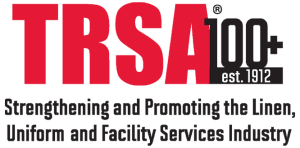Staffing Dilemmas: TRSA’s HR Chairman Weighs In

As a follow-up to the TRSA Human Resources Committee’s recent survey on recruitment/retention issues (click here to learn more), Textile Services Weekly posed the following questions to Sean Hearn, committee chair and regional HR manager for Mission Linen Supply, Sacramento, CA.
How significant is employee turnover in the industry today, particularly plant personnel in the “millennial” age group (born 1984-2004)?
Turnover is a very significant issue for industrial laundries. One key component to achieving maximum efficiency is being able to establish crews that are well trained and have established methods to best perform their duties. Turnover not only hampers our ability to develop seasoned crews, but there is the added component of our managers having to spend more time in the recruiting process – time that could be better utilized elsewhere.
The millennial group, which obviously is the most rapidly increasing population of our applicant pool, brings a different attitude to the workplace than what we are accustomed. They seem more in need of immediate and constant feedback. The type of work our industry offers appears to appeal less to millennials than to past generations. In fact, we find that many recruits in this group often last less than a week and simply leave without any notice to management. It’s important that we find ways to make our industry more attractive to them, particularly since going forward they represent the employee group we need to onboard.
How big an impact do you think employee satisfaction surveys can have in terms of reducing turnover?
I would say that depends on the organizational culture. It also depends on what the organization does with the survey results. Managers that are particularly communicative with employees would seemingly benefit more from these surveys than those who are less hands-on.
Can more extensive screening/onboarding help companies do a better job of getting qualified employees who’ll stay on the job?
The screening and onboarding process is arguably the most critical. Too many times management is in a position of having to hire the first available candidate, which is a roll of the dice. If the organization can afford to take the time to more thoroughly interview the candidate, obviously the chances of finding the right people increases. It also might be time to look at our recruiting and onboarding methods and consider how we can evolve. This might mean ensuring that candidates get a chance to spend time in the facility or department for which they are being hired during the interview. It might mean we include our most senior or best performer in the department to participate in the interview process. People who have worked for an organization a long time and with proven results can often tell early on who is and is not a good fit.
Is the committee planning any more surveys on this or related topics?
I believe it is a topic we can explore further. As long as surveys are meaningful and provide value to our members, we of course would be happy to delve further into this and other topics. In my opinion, the next most relevant topic, which can complement the turnover survey, would be attendance. I believe the two go hand in hand in terms of indicating employee satisfaction. I also believe that attendance issues are arguably as significant, if not more so, than turnover.
To learn more about the work of TRSA’s Human Resources Committee, contact staff liaison Mary Beth Porter at mporter@trsa.org.
